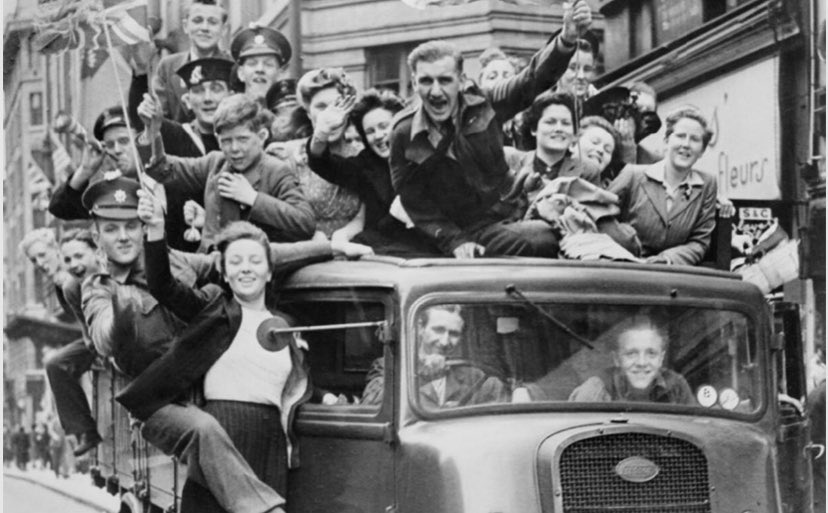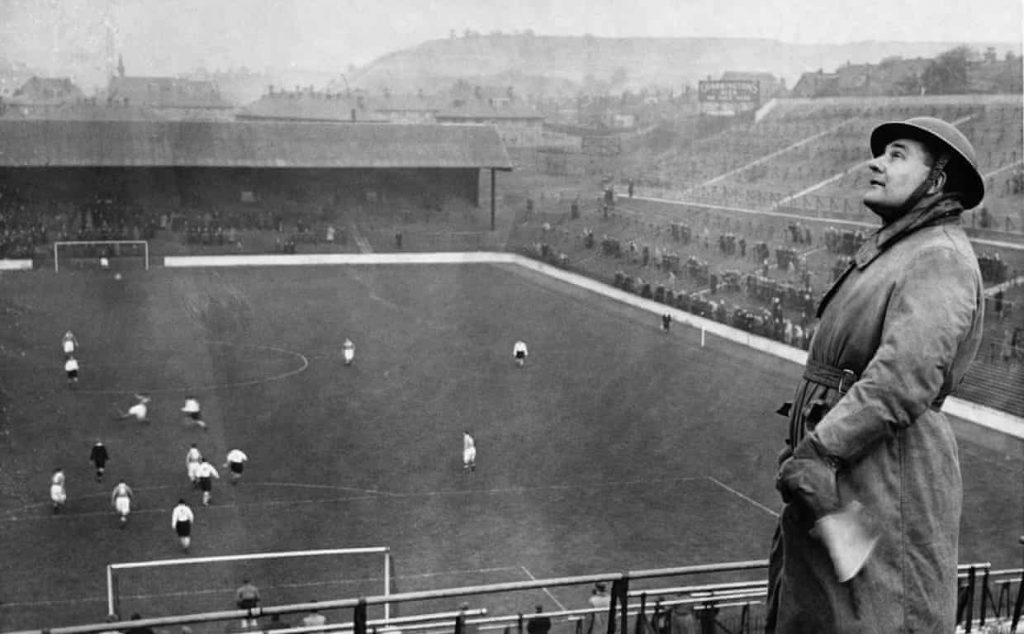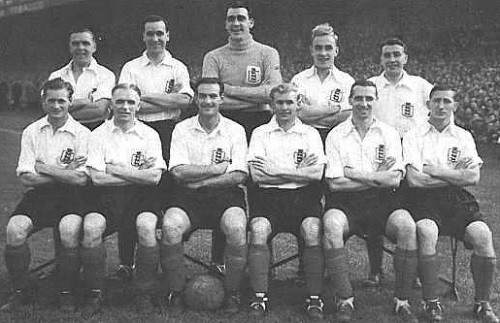VE Day: How did football restart after the Second World War?
Today marks the 75th anniversary of Victory in Europe (VE) day. On Tuesday 8th May 1945, the allied forces formally accepted Nazi Germany’s unconditional surrender marking the end of World War II in occupied Europe.
British Prime Minister, Winston Churchill marked the occasion by declaring a public holiday. People flocked into the streets holding parties, singing, dancing and celebrating the defeat of Germany. In the darkest days of the war, sport and particularly football acted as a beacon of hope for many and was key in keeping spirits high.

The declaration of war in 1939 meant both The Football League and the FA Cup were suspended indefinitely. Over 780 footballers signed up to fight on the front line, leaving many of England’s best teams depleted. As a result, teams like Wolves, Liverpool, Huddersfield, Leicester and Charlton were left with nearly 350 fewer players between them. This meant that teams were permitted to field guest players to play for their sides in the ten regional “mini-leagues” which were established in 1939.
The Wartime League saw divisions established all over the country. There were two in the North, one in each of the East and West Midlands, one in the South West and two in the South which were played in two sections. In the 1940-41 season, the leagues were reduced to just two, named a season later as the League North and League South. That season also saw the addition of the London League.
To fill the void left by the FA Cup, a special War Cup was established by the Football League to boost morale and to keep the game going. West Ham won the inaugural competition with Bolton Wanderers ending as the last ever winner of the cup.
As highlighted by Matthew Taylor, a history professor at De Montfort University, the continuation of football during this difficult period helped to entrench the game in British identity and had a positive impact on society as a whole.
“It was during the so-called ‘people’s war’ that the idea that football had a central role in British social and cultural life first took root.”
This impact was reflected in the post-war attendance figures. The Football League peaked in numbers in 1948-49 with 41million attendees, nearly 10 million more than the total number for the last Premier League and EFL campaign.
Club Football
The Football League returned to somewhat normality in the 1945-46 season, but the wartime league structure continued for one more year. There were 22 clubs in each of the Southern and Northern divisions, but the third tier was split into four different regions – West, East and North and South of the Thames.
The 1945-46 season saw the return of the FA cup, with holders Portsmouth relinquishing it for the first time in six years. Derby County beat Charlton Athletic 4-1 after extra time in a match held at Wembley.
As of the 1946-47 season, the league returned to its pre-war format of First Division, Second Division, Third Division North, Third Division South. Despite being the first season to feature a full-football program since before the war, a bitterly cold winter forced the postponement of a number of fixtures, not too dissimilar to what we are seeing with the coronavirus. This meant that it wasn’t until mid-June that Liverpool added their fifth league title. The Reds beat rivals Manchester United by just one point despite losing 10 of their league games.

International Football
Much like the First World War, two series of ‘Victory internationals’ were played by the national teams of England, Scotland, Ireland and Wales.
Among these games played between 1945-46, were fixtures against France, Switzerland and Belgium. These games were regarded as Victory Internationals that formed part of the British Victory Home Championship. A Russian team had also been invited to Wembley, but it was still too difficult to cross the continent.
England’s first match at Wembley following the war was in May 1945, a 2-2 draw against France in front of a crowd of 65,000. This match marked the first foreign opposition to play at the national stadium since the start of the war and was in aid of the British and French war charities.
Although important, these fixtures are recognised in the records as unofficial matches and it wasn’t until England lost 7-2 in Ireland in September 1946 that the first official international fixture was played. Their first official home fixture, the 1-1 draw against Scotland in April 1947.
